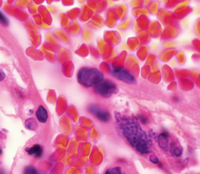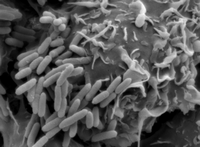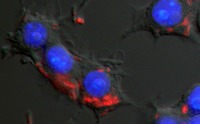
Yersinia pestis is the bacterium that causes plague, a highly infectious and contagious organism that has caused three global pandemics including the Black Death of the 14th century. Plague is transmitted by flea bites from rodents to rodents and humans are infected when they handle infected animals or are bitten by an infected flea. Persons infected by fleabite have enlarged and tender lymph nodes, fever, chills and prostration. Inhalation of Yersinia pestis causes fever, chills, cough, and difficulty in breathing and an acute and lethal bronchopneumonia. Pneumonic plague is highly infectious and can be transmitted from person to person by inhalation of infectious aerosols. It is also the most deadly form of plague, with mortality rates approaching 100% if left untreated.

The last noted plague epidemic in the U.S. was in 1924-25, and since then human plague in the U.S. is sporadic, typically the bubonic form and concentrated in the southwestern states. More recent outbreaks including deadly pneumonic plagues have occurred worldwide in virtually all continents, with endemic foci of plague in India, China, Algeria, Brazil, and others. Each year, between one and 20 cases are reported in the U.S., and about 2,000 cases are reported worldwide with most occurring in rural areas.

Transmission and virulence of Yersinia pestis involves multiple parameters including contributions from both host and pathogen. Scientists at MU aim to understand the persistence and progression of plague in both the flea and mammalian hosts. At the Laboratory for Infectious Disease Research, we work towards the development of safe and effective vaccines and therapeutics that prevent and treat bubonic and pneumonic plague.